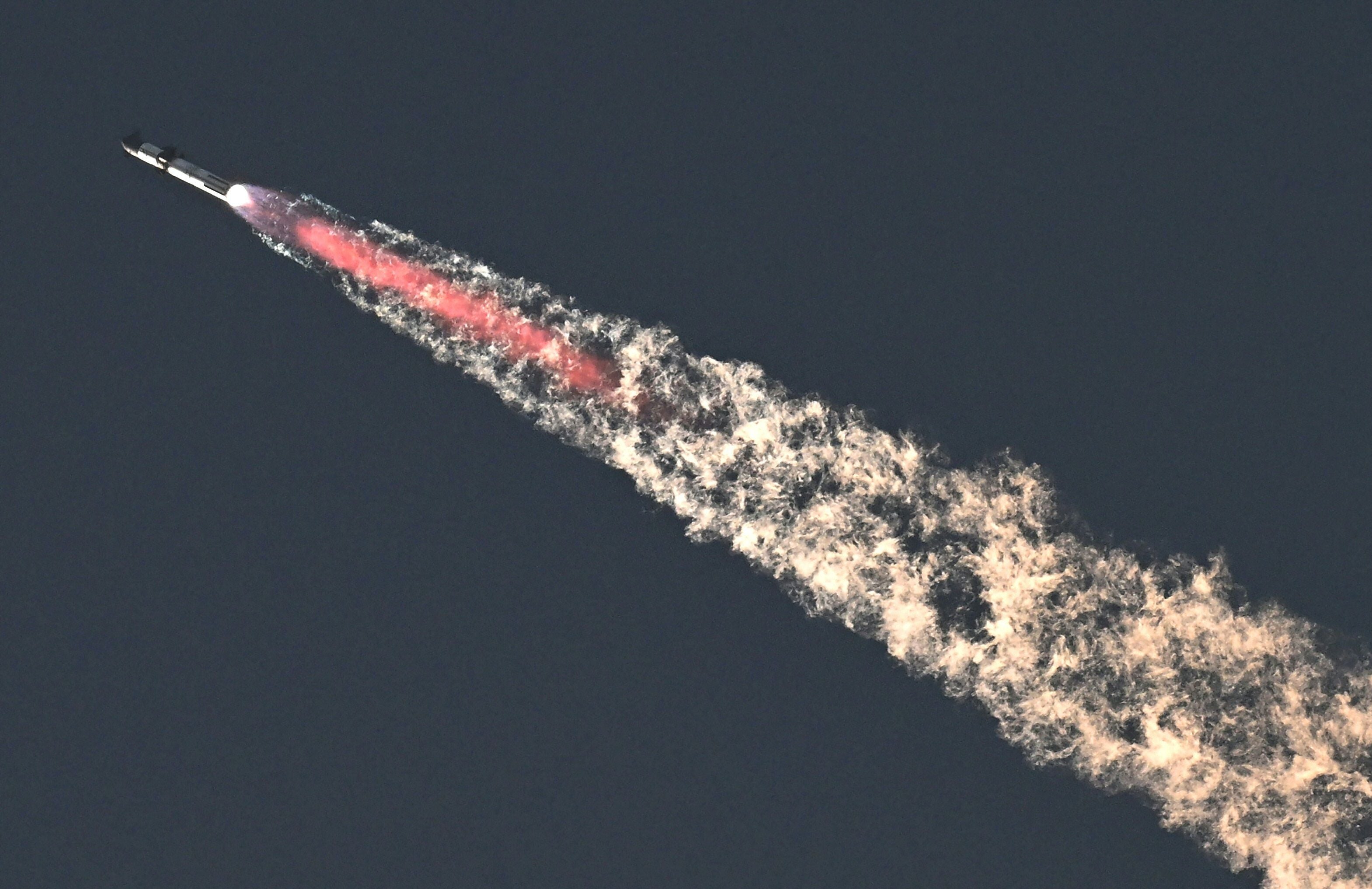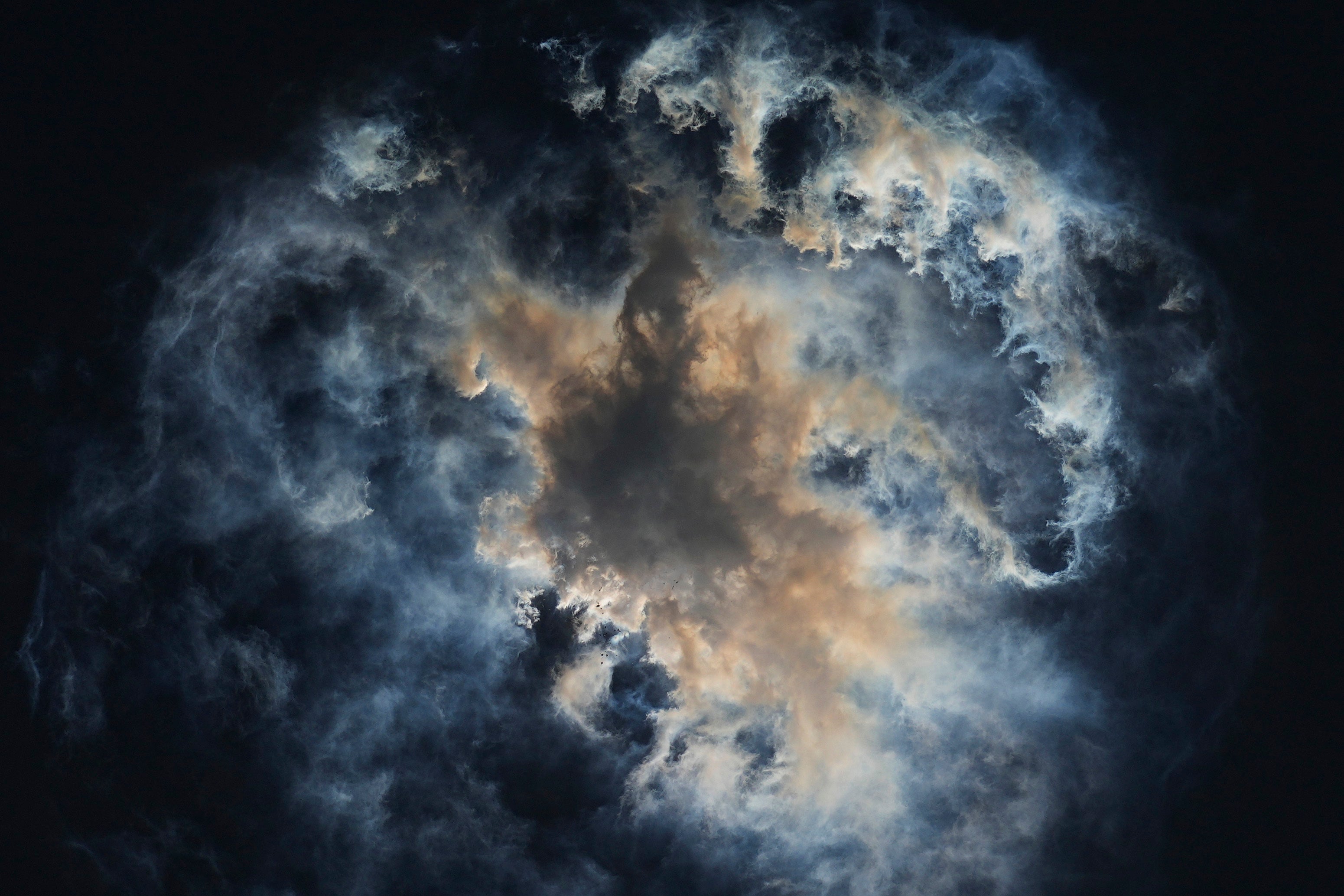SpaceX Starship: Elon Musk launches most powerful rocket in the world for first time – before it disappears
Spacecraft’s signal lost after it reached an altitude of almost 150km
Your support helps us to tell the story
From reproductive rights to climate change to Big Tech, The Independent is on the ground when the story is developing. Whether it's investigating the financials of Elon Musk's pro-Trump PAC or producing our latest documentary, 'The A Word', which shines a light on the American women fighting for reproductive rights, we know how important it is to parse out the facts from the messaging.
At such a critical moment in US history, we need reporters on the ground. Your donation allows us to keep sending journalists to speak to both sides of the story.
The Independent is trusted by Americans across the entire political spectrum. And unlike many other quality news outlets, we choose not to lock Americans out of our reporting and analysis with paywalls. We believe quality journalism should be available to everyone, paid for by those who can afford it.
Your support makes all the difference.SpaceX has launched its Starship aircraft, the world’s most powerful rocket, with partial success.
The two-stage rocketship blasted off from the Elon Musk-owned company’s Starbase launch site near Boca Chica in Texas on Saturday, helping boost the spacecraft as high as 148km (90 miles) above ground on a planned 90-minute test mission to space and back.
But the rocket’s Super Heavy first stage booster, though it achieved a crucial manoeuvre to separate with its core Starship stage, exploded over the Gulf of Mexico shortly after detaching. Meanwhile, the core Starship stage boosted further toward space, but a few minutes later mission control lost contact with the vehicle.
It marked SpaceX’s second attempt to launch Starship, after a previous test in April saw the rocket explode soon after launch.
The company said in a post on X, formerly known as Twitter: “With a test like this, success comes from what we learn, and today’s test will help us improve Starship’s reliability as SpaceX seeks to make life multiplanetary.”

Eventually, SpaceX hopes that Starship will fly to the Moon and help with missions to Mars. But first it must undergo a series of uncrewed tests to ensure it is safe.
Musk – SpaceX’s founder, chief executive and chief engineer – also sees Starship as eventually replacing the company’s workhorse Falcon 9 rocket as the centerpiece of its launch business that already lofts most of the world’s satellites and other commercial payloads into space.
Nasa, SpaceX’s primary customer, has a considerable stake in the success of Starship, which the US space agency is counting on to play a central role in its human spaceflight program, Artemis, the successor to the Apollo missions of more than a half century ago that put astronauts on the moon for the first time.
The American space agency congratulated the team on its launch. Nasa chief Bill Nelson wrote on X: “Spaceflight is a bold adventure demanding a can-do spirit and daring innovation. Today’s test is an opportunity to learn – then fly again.”
Starship’s towering first-stage booster, propelled by 33 Raptor engines, puts the rocket system’s full height at some 122m (400ft) and produces thrust twice as powerful as the Saturn V rocket that sent the Apollo astronauts to the moon.

SpaceX had been aiming to at least exceed Starship Super Heavy’s performance during its 20 April test flight, when the two-stage spacecraft blew itself to bits less than four minutes into a planned 90-minute flight.
That flight went awry from the start. SpaceX has acknowledged that some of the Super Heavy’s 33 Raptor engines malfunctioned on ascent, and that the lower-stage booster rocket failed to separate as designed from the upper-stage Starship before the flight was terminated.
The company’s engineering culture, considered more risk-tolerant than many of the aerospace industry’s more established players, is built on a flight-testing strategy that pushes spacecraft to the point of failure, then fine-tunes improvements through frequent repetition.
A failure at any point in the test flight would be a major concern for Nasa, which is counting on SpaceX‘s rapid rocket development ethos to swiftly get humans to the moon in the US competition with China’s lunar ambitions.

Nasa’s Mr Nelson, who has made the China rivalry a key need for speed, compared Starship’s test campaign with the success of SpaceX’s past rocket development efforts.
“How did they develop the Falcon 9? They went through many tests, sometimes it blew up,” Mr Nelson told Reuters on Tuesday. “They’d find out what went wrong, they’d correct it then go back.”
The spacecraft in April reached a peak altitude of roughly 40km (25 miles), only about halfway to space at its target altitude of 150km (90 miles), before bursting into flames.

Musk has said that an internal fire during Starship’s ascent damaged its engines and computers, causing it to stray off course, and that an automatic-destruct command was activated some 40 seconds later than it should have to blow up the rocket.
The launch pad itself was shattered by the force of the blastoff, which also sparked a 3.5-acre (1.4-hectare) brush fire. No one was injured. SpaceX has since reinforced the launch pad with a massive water-cooled steel plate, one of dozens of corrective actions that the US Federal Aviation Administration required before granting a launch licence on Wednesday for the second test flight.
Additional reporting by agencies

Join our commenting forum
Join thought-provoking conversations, follow other Independent readers and see their replies
Comments